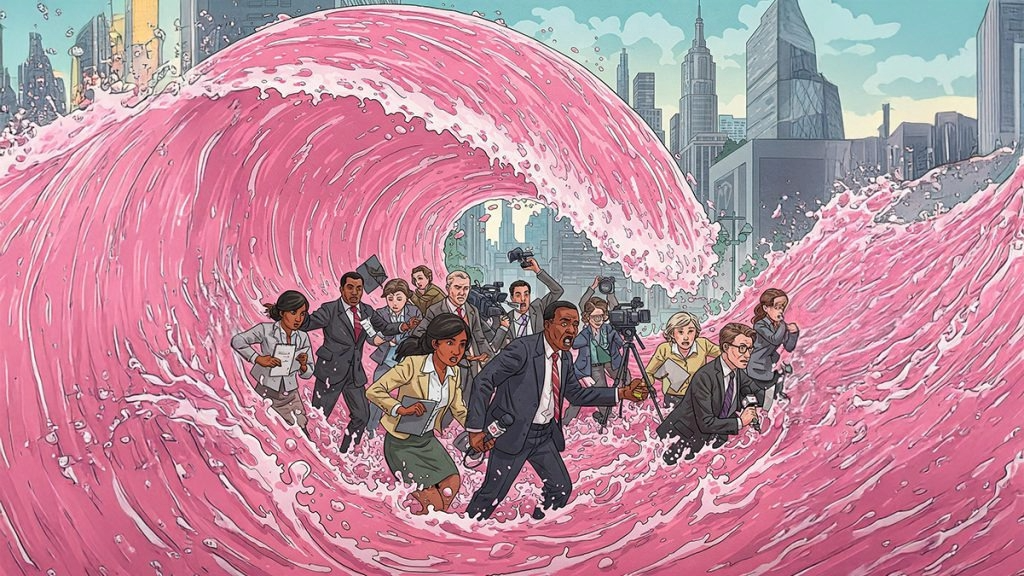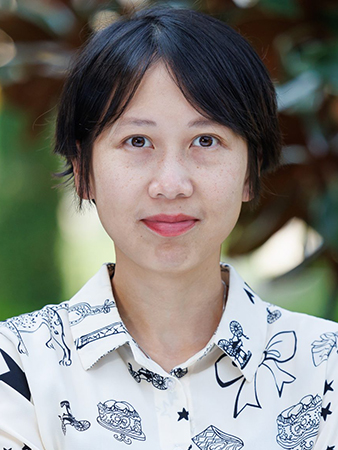
The surprising truth about ‘pink slime’ journalism
Pink slime news is low quality — but not because of political bias, according to research from the Missouri School of Journalism
You’ve probably seen one before: a news website filled with an overwhelming amount of aggregated content from all over the internet, with just enough local stories thrown in to capture your attention. Leaning on algorithmically generated content, networks of such sites can publish millions of stories per month, sometimes with little regard for the presence of plagiarism and misinformation.
Some have taken to calling this form of journalism “pink slime,” a nod to the cheap but less-than-appetizing beef product once common in fast food. And much like health experts sounding the alarm about the risks of processed foods, researchers are concerned that pink slime journalism could have harmful effects on audiences.

Chau Tong, an assistant professor at the Missouri School of Journalism and the MU Institute for Data Science and Informatics, is particularly interested in determining whether pink slime news influences political beliefs and election outcomes. Previous research has pointed to potential political biases within pink slime content — so much so that in some circles, “pink slime” has become synonymous with low-quality, partisan journalism — leading Tong and her team to scour data from nearly 8 million articles in search of insights.
“We want to have an overview of how pink slime outlets are performing across the U.S.,” Tong said. “How do they cover politicians at different levels? What is the volume of coverage, the tone of coverage and does that have any relationship with the actual electoral results?”
So far, the analysis has covered content in 11 states, and the results contradict earlier studies that identified a conservative slant and an emphasis on local political figures. While Tong’s study has found more coverage for conservative politicians, this has only been the case in states that tend to vote conservative. Likewise, blue states see more coverage of left-leaning politicians, averaging out to a roughly even split in coverage.
“There is no clear, systematic evidence of political bias,” Tong said. “What we’re seeing so far is that there is not much difference between the left and the right in terms of coverage.”
“We want to have an overview of how pink slime outlets are performing across the U.S. How do they cover politicians at different levels? What is the volume of coverage, the tone of coverage and does that have any relationship with the actual electoral results?”
Chou Tong, assistant professor at the Missouri School of Journalism and the MU Institute for Data Science and Informatics
At the same time, the findings thus far indicate that national House and Senate figures are far more likely to be featured than local politicians, once again complicating earlier research. But the gap isn’t just national versus local; Tong said politicians might have some agency when it comes to boosting their prominence in the world of pink slime news.
“There is some evidence of a connection between how active a politician is on social media and how much attention they get from a pink slime network,” Tong said. “An implication is maybe that being very active on social media doesn’t just grow your social media following. It can also influence your visibility in pink slime.”
Tong and her team of University of Missouri researchers — including Assistant Professor Joy Jenkins, Professor Damon Kiesow, graduate student Michael Hatley and undergraduate Tanner Smith — presented the study’s initial findings in late March during the University of North Carolina at Chapel Hill’s Local Journalism Researchers Workshop.
The goal is to expand the analysis to all 50 states and develop an online dashboard to present updates on the research as it continues.
Cite this article
Fitzgerald, Austin (2025, April 15). The surprising truth about ‘pink slime’ journalism. Reynolds Journalism Institute. Retrieved from: https://rjionline.org/news/the-surprising-truth-about-pink-slime-journalism/
